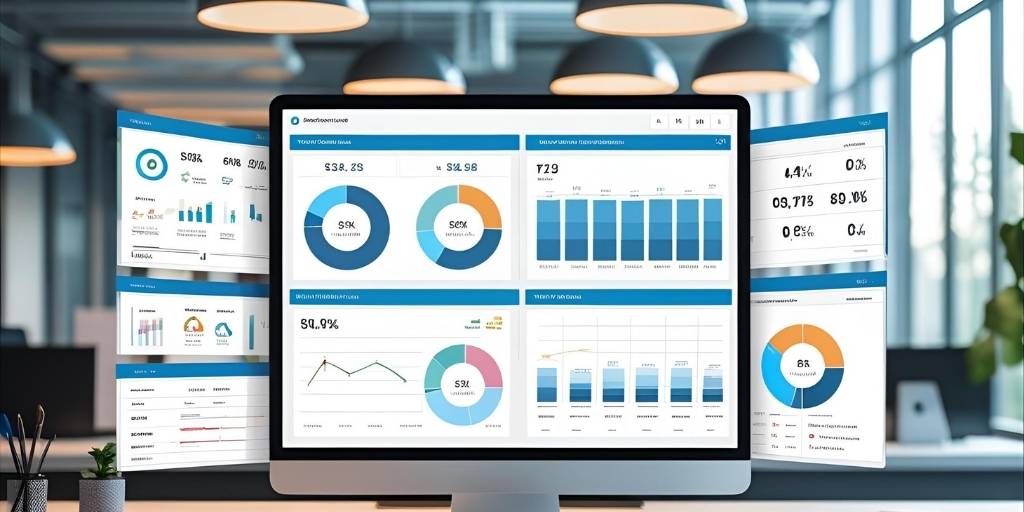With the modern fast-paced digital environment, more and more companies start relying on Software-as-a-Service (SaaS) apps that allow modern organizations to optimize their corporate processes and stimulate their business development. Nevertheless, proper control over numerous SaaS subscriptions, licenses, and access to different users may rapidly become out of control and quite confusing. This is where SaaS operations management software comes in handy to contemporary enterprises.
The spread of cloud-based solutions has turned out to pose new issues to the IT teams, such as shadow IT risks, license optimization, vendor management, and compliance monitoring. Many organizations lack insight into their SaaS environment and are forced to waste money, face security risks, and be operationally ineffective. These pain points are addressed by SaaS operations software, which gains centralized control over all of the assets and a full understanding of the entire SaaS portfolio of an organization.
What is SaaS Operations Management Software?
SaaS operations management software includes customized platforms that give organizations a full view of their cloud-based applications ecosystem and offer them management and control. These are solutions to the fact that managing multiple software subscriptions, user access, and relations with vendors can be a complicated task in present-day digital workplaces.
- Discovery: Automatic identification systems that scan organizational networks to scan and identify all the SaaS applications, including the shadow IT applications, and inactive subscriptions. Detection techniques employed by these platforms include network traffic analysis, browser monitoring, financial data integration, and API connections, in order to have full visibility of the software landscape.
- Management: Centrally-controlled features that allow the IT administrators to monitor user access, application grants, and organizational policies through a single dashboard. The tools provide efficiency to administrative processes, automate administrative tasks, and offer real-time visibility over application use patterns in different departments and individual users.
- Optimization: Smart recommendation engines that scan the usage, spending habits, and application performances to find out the cost-saving opportunities and efficiency boosts. These systems assist organizations in eradicating unnecessary subscriptions, correcting license provisions, and receiving optimal vendor contracts based on the real measures of usage.
- Governance: Fully developed policy enforcement systems that guarantee adherence to security standards, as well as regulation and organizational standards. Such platforms also oversee the application security postures, track the compliance statuses, as well as produce detailed reports relating to audit purposes and risk management operations.
- Integration: The ability to replenish the gaps in the IT landscape with seamless connectivity features that integrate SaaS management platforms with the rest of the IT infrastructure, HR systems, and financial tools to form a single source of operation and data synchronization among the enterprise systems.
Key Features of SaaS Operations Management Software
The contemporary SaaS operation management software offers the necessary features that help to mitigate the pain points in the management of cloud applications and can offer organizations the aid they require in managing and optimizing.
- Discovery: Multi-stratum detection mechanism that detects every SaaS application in the organizational networks by monitoring the network, tracking the financial operations, and tracking browsers, as well as integrating APIs. These all-around discovery techniques give 100 percent visibility of all approved and shadow IT software, as well as in-depth user access information and analytics around usage.
- Analytics: Technological complexes of data processing that interpret raw data on the use of applications into practical use in the form of spend analysis, tracking of utilization, performance measurement, and trend detection. These analytics allow fact-based decision making for license optimization, budget management, and strategic portfolios in applications achieved in departments of an organization.
- Automation: Smart workflow systems that automate routine administrative processes such as user provisioning, license assignment, access control, and compliance checks. These automated steps minimize manual overheads, eliminate human errors, and render a uniform implementation of the policies but while at the same time keeping an elaborate audit trail of all activities done in the system.
- Compliance: Holistic monitoring systems that validate applications continuously with security standards, regulatory requirements, and local policies. These systems output extensive compliance reports, point out risk factors, and release remediation instructions to allow secure and compliant SaaS environments across the firm’s infrastructure.
- Integration: Sturdy connectivity mechanisms that can complement SaaS management settings without any hassles to established enterprise systems such as HR databases, financial solution providers, identity providers, and security platforms. The integrations facilitate consolidated data interactions, uniform user management, and an overall view of the operations within all investments in technology.
Comparison Table for SaaS Operations Management Software
| Platform | Rating | Website | Unique Differentiator |
| Zluri | 4.8/5 | zluri.com | Nine discovery methods with 100% SaaS stack visibility |
| Zylo | 4.7/5 | zylo.com | AI-powered categorization and enterprise-grade analytics |
| Torii | 4.7/5 | toriihq.com | AI discovery reveals 4x more applications than competitors |
| Lumos | 4.8/5 | lumos.com | Security-first approach with comprehensive compliance features |
| Subtly | 4.95/5 | subtly.io | Tailored specifically for small and midsize organizations |
| Trelica | 4.8/5 | trelica.com | Comprehensive SaaS ecosystem management with detailed reporting |
| Josys | 4.7/5 | josys.io | Unified IT asset management, including hardware and software |
| CloudEagle | 4.7/5 | cloudeagle.io | 300+ integrations with proactive redundancy notifications |
| Megazone PoPs | 5.0/5 | megazone.com | Personalized app launcher with real-time user management |
| ActivTrak | 4.5/5 | activtrak.com | Productivity-focused with detailed usage analytics |
Top 10 SaaS Operations Management Software
1. Zluri

Type: Comprehensive SaaS Management Platform
Ratings: G2: 4.7/5, Capterra: 4.9/5
Website URL: https://www.zluri.com/
Zluri is one of the most trusted SaaS operations management platforms that offer an unmatched view into the SaaS ecology of any organization using the nine-pronged discovery engine. The platform is the best at offering broad interpretations of application use, security risk, and user access patterns based on an intuitive interface that makes the most complicated SaaS management processes simpler.
The power of the solution is its ability to identify even the sleeping applications in the infrastructure of a particular organization, which can guarantee the full visibility of the SaaS cloud. The Zluri Software is designed on an expert-level analytics engine that works with huge quantities of data to provide actionable insights to enable IT teams to make informed choices regarding license optimization, security compliance, and cost reduction actions.
Key Features:
- Nine discovery methods
- Centralized license management
- Automated renewal calendar
- Optimization summary dashboard
- Vendor contract management
Pros:
- Complete SaaS visibility
- Intuitive user interface
- Comprehensive vendor management
Cons:
- Premium pricing structure
- Complex initial setup
- Limited customization options
Pricing: Custom pricing
2. Zylo
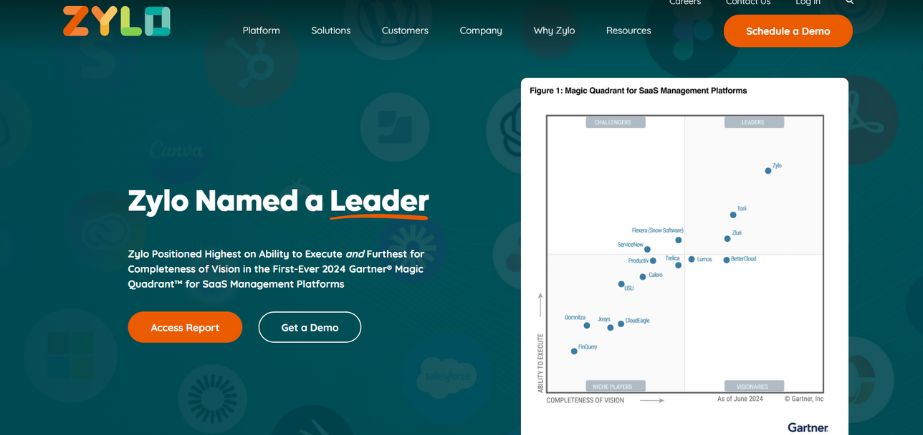
Type: Enterprise SaaS Management Platform
Ratings: G2: 4.8/5, Capterra: 4.5/5
Website URL: https://zylo.com/
Zylo is an advanced application to manage operations through software as a service (SaaS) that is directly tailored to the enterprise environment where it is necessary to deploy advanced analytics and Artificial Intelligence-enabled insights. The platform is based on artificial intelligence to automate the classifications of applications and offer a wide range of inventory management capabilities that could grow with an organizational scale.
The enterprise-grade design of the solution controls complex organizational hierarchy and provides optimized recommendations and details in spend analytics. Benchmark data Zylo offers organizations the ability to compare their spend on SaaS to industry averages, easing the way to effective negotiation tactics and cost control choices.
Key Features:
- AI-powered application categorization
- Enterprise-grade inventory management
- Benchmark data analytics
- Automated spend optimization
- License utilization tracking
Pros:
- Enterprise-focused architecture
- Advanced AI capabilities
- Industry benchmark comparisons
Cons:
- Higher cost barrier
- Complex feature set
- Longer implementation timeline
Pricing: Custom pricing
3. Torii
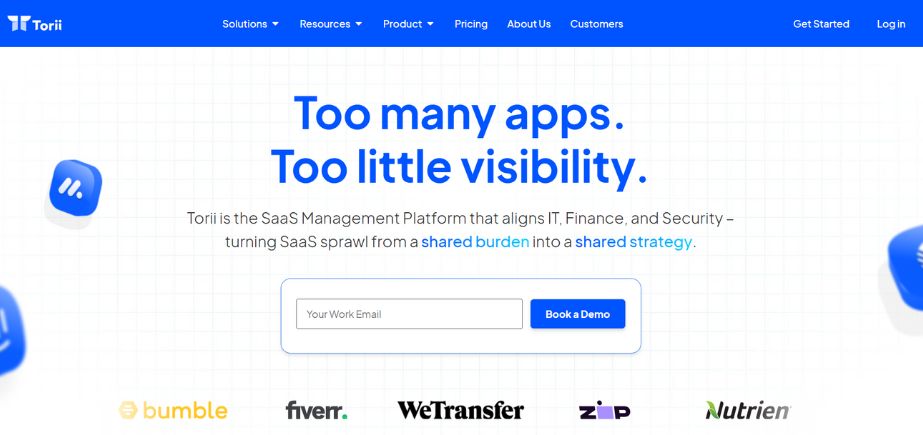
Type: AI-Powered SaaS Management Platform
Ratings: G2: 4.5/5, Capterra: 4.9/5
Website URL: https://www.toriihq.com/
Torii stands out in the market as a novel SaaS operations management software encompassing artificial intelligence to find fourfold more applications than traditional discovery processes. The AI-based direction of the platform makes any sanctioned and shadow IT applications visible, and hence, organizations can have full control of their environments, specifically the SaaS environment.
The savings that have been recommended by the solution have been shown to save many organizations more than 30% of the amount they spend on SaaS by using smart license optimization and the consolidation of applications. To empower experts to develop their own customization and integration possibilities to a high extent, Torii offers an open API architecture with its developer community support.
Key Features:
- AI-powered discovery mapping
- Cost-saving recommendation engine
- Open API customization
- Plugin marketplace integration
- Shadow IT detection
Pros:
- Superior application discovery
- Significant cost savings
- Extensive customization options
Cons:
- Steep learning curve
- Limited built-in integrations
- Resource-intensive implementation
Pricing: $2.5 / Employee / Month
Suggested Blogs: Top SaaS Analytics Tools and Top SaaS Accounting Software
4. Lumos
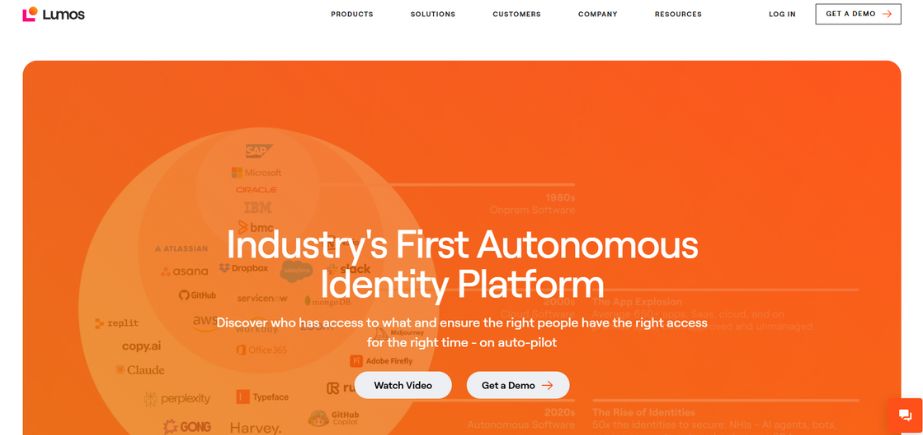
Type: Security-Focused SaaS Management Platform
Ratings: G2: 4.8/5
Website URL: https://www.lumos.com/
Lumos markets as a security-focused SaaS operating management platform, with compliance and risk management being the most important factors. The platform serves those organizations that are in very tightly regulated industries, where security and compliance are of the utmost importance to their business.
The effectiveness of the solution in terms of the broad spectrum of security assessment functions presents a comprehensive overview that gives reports on the security posture of applications to make sure that the organizational provisions are made to meet the stringent industry demands and regulatory policies. Lumos is very good at finding vulnerabilities and compliance gaps, as well as offering compelling remediation action plans that can be tracked early.
Key Features:
- Security posture assessment
- Compliance reporting automation
- Risk management framework
- Application security monitoring
- Regulatory compliance tracking
Pros:
- Security-first approach
- Comprehensive compliance features
- Detailed risk assessments
Cons:
- Limited cost optimization
- Complex security configurations
- Narrow feature focus
Pricing: Custom pricing
5. Subtly
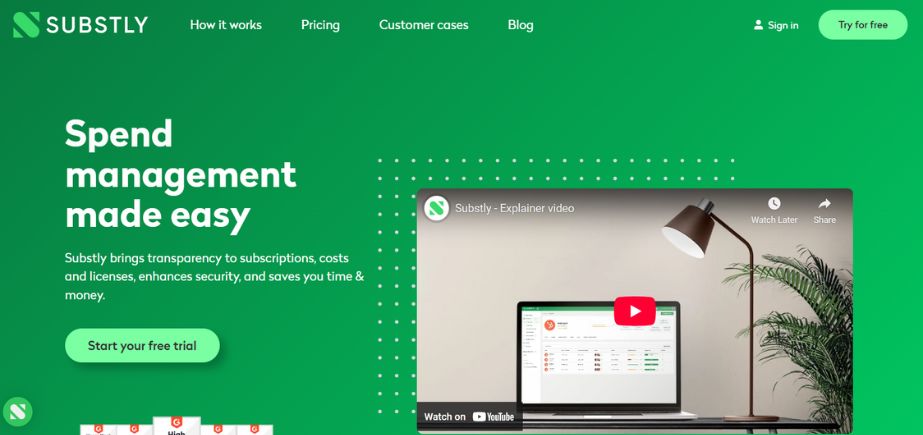
Type: SMB-Focused SaaS Management Platform
Ratings: G2: 4.9/5, Capterra: 5/5
Website URL: https://www.substly.com/en/
Subtly is a specific operations management software as a service program that targets small and medium-sized enterprises requiring all functions of SaaS management without the enterprise-level complexity. The platform has included the necessary features that suited the specific requirements and resource limitations of smaller organizations.
The cloud-based architecture of the solution enables its easy deployment and little maintenance overhead with high discovery and optimization performance. The ease of use and simple workflows of Subtly include the ability to be used by any organization regardless of IT resources at their disposal, so that they can be able to manage their SaaS effectively without necessarily involving specialized experts.
Key Features:
- Automated application discovery
- SMB-tailored interface design
- Usage analytics dashboard
- Cost optimization insights
- User access monitoring
Pros:
- SMB-friendly pricing
- Simplified user interface
- Quick deployment process
Cons:
- Limited enterprise features
- Fewer integration options
- Basic reporting capabilities
Pricing: €95/month
6. Trelica
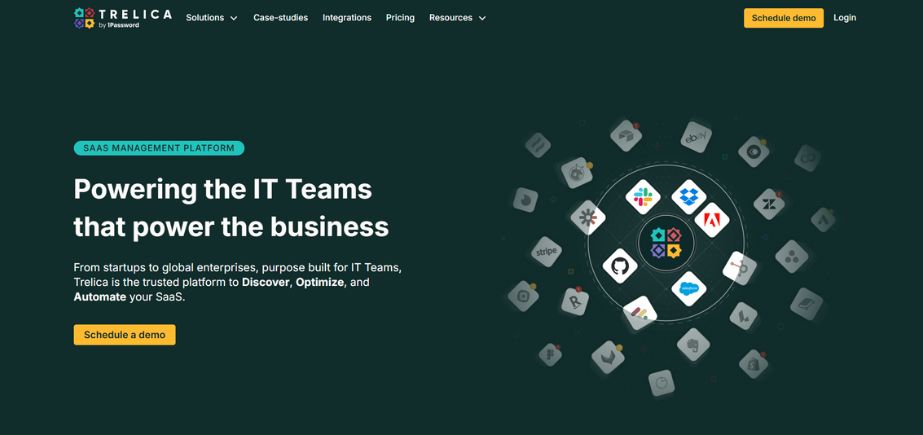
Type: Comprehensive SaaS Ecosystem Management Platform
Ratings: G2: 4.8/5
Website URL: https://www.trelica.com/
Trelica provides a complete SaaS operations management software that operates growing SaaS environments with advanced discovery, inventory management, and optimization functionality. The platform has in-depth information about the usage and spending trends on applications, and the status of applications on security measures.
The strength behind the solution is based on the capacity to produce elaborate reports and analytics that enable making data-driven choices in every facet of SaaS management. The effective management renewal process provided by Trelica helps the organization ensure that they do not miss any important contract dates, as well as streamlining its licensing and negotiation options.
Key Features:
- Comprehensive SaaS discovery
- Detailed spend analytics
- License renewal management
- Usage insight reporting
- Security compliance monitoring
Pros:
- Comprehensive feature set
- Detailed reporting capabilities
- Strong renewal management
Cons:
- Higher pricing tiers
- Complex initial configuration
- Limited mobile accessibility
Pricing: Custom pricing
7. Josys
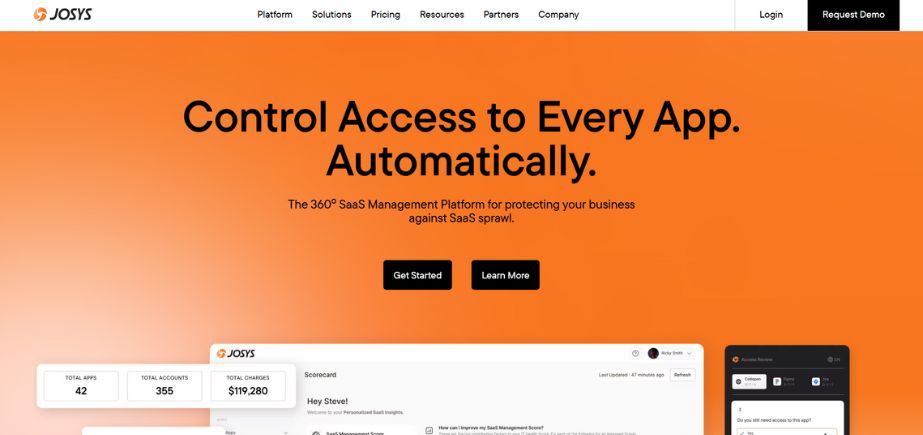
Type: Unified IT Asset Management Platform
Ratings: G2: 4.7/5
Website URL: https://www.josys.com/
Josys is different in its SaaS operations management software offering approach in integrating software, hardware, and user profiles management as a single unified solution. It becomes a single overarching solution, giving IT teams a full view and control of all technology assets on a single dashboard.
Integration with the HR systems that are popular, such as Google Workspace or Microsoft Azure, allows the platform to synchronize employee data and provision users automatically and smoothly. The holistic model offered by Josys makes IT management much simpler, in addition to offering visual complexity to the SaaS applications and management of permissions related to the different roles.
Key Features:
- Unified IT asset management
- HR system integrations
- Automated user provisioning
- Role-based permissions
- Comprehensive asset visualization
Pros:
- Unified asset management
- HR system integration
- Streamlined user provisioning
Cons:
- Complex feature overlap
- Higher learning curve
- Limited specialization focus
Pricing: Custom Pricing
8. CloudEagle
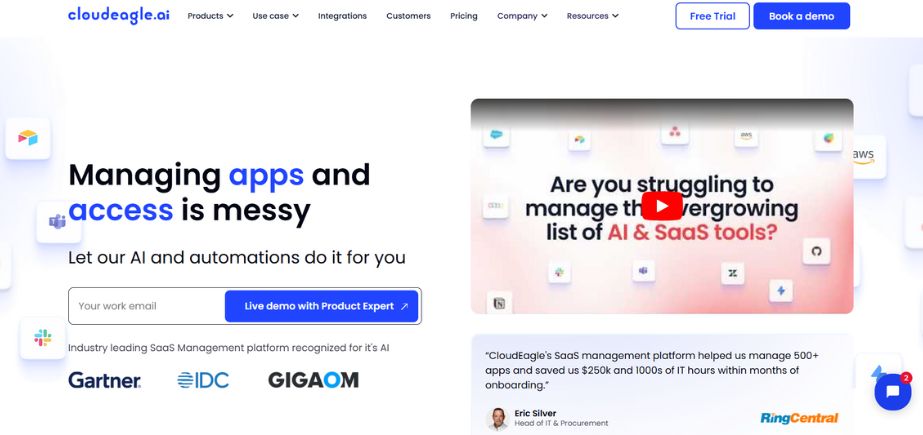
Type: Integration-Rich SaaS Management Platform
Ratings: G2: 4.7/5
Website URL: https://www.cloudeagle.ai/
CloudEagle stands out as one of the most integrated SaaS operations management software tools, with more than 300 industry-leading integrations to present complete and quality information on the use of licenses. The broad integration landscape of the solution offers unmatched insight into the usage of applications as well as optimization possibilities in SaaS.
The AI-based automation features in the platform unify the renewal dates and contract information and also give proactive alerts regarding redundancy in the applications. Using CloudEagle, an intelligent alert system, helps organizations from failing to renew licenses in time or duplicating applications in their SaaS portfolio.
Key Features:
- 300+ application integrations
- AI-powered renewal management
- Redundancy detection alerts
- Automated access management
- Single-click license deprovisioning
Pros:
- Extensive integration library
- Proactive redundancy alerts
- Automated access management
Cons:
- Integration complexity
- Higher implementation costs
- Overwhelming feature set
Pricing: $2,500/month
9. Megazone PoPs
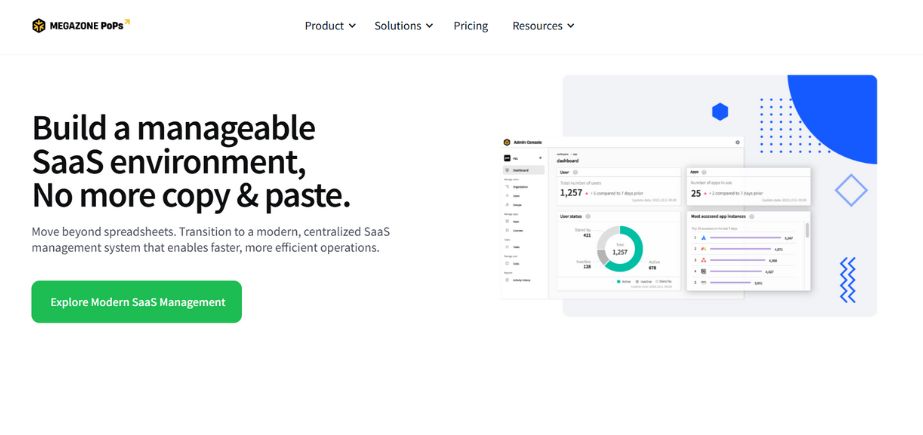
Type: Personalized SaaS Management Platform
Ratings: G2: 5.0/5
Website URL: https://pops.megazone.com/us
A distinctive management software is provided by Megazone PoPs, which is characterized by a personal launcher of applications and active management of users in real time. It offers a centralized administration experience through which administrators can have complete control over SaaS usage by the employees and also provides an end-user experience with customized access to the application.
The administrator control capabilities of the solution allow IT departments to perform management of SaaS applications at the level of users, groups, and business units with real-time coalition and control. The emphasis on the user experience by Megazone PoPs integrated with the administrative control results in the optimal balance of two opposites, usability on the one hand and control on the other hand.
Key Features:
- Personalized app launcher
- Real-time user management
- Administrator control dashboard
- Customizable access views
- Cost optimization tools
Pros:
- Perfect user ratings
- Personalized user experience
- Real-time management capabilities
Cons:
- Limited market presence
- Fewer third-party integrations
- Regional availability constraints
Pricing: Contact for custom pricing information
10. ActivTrak
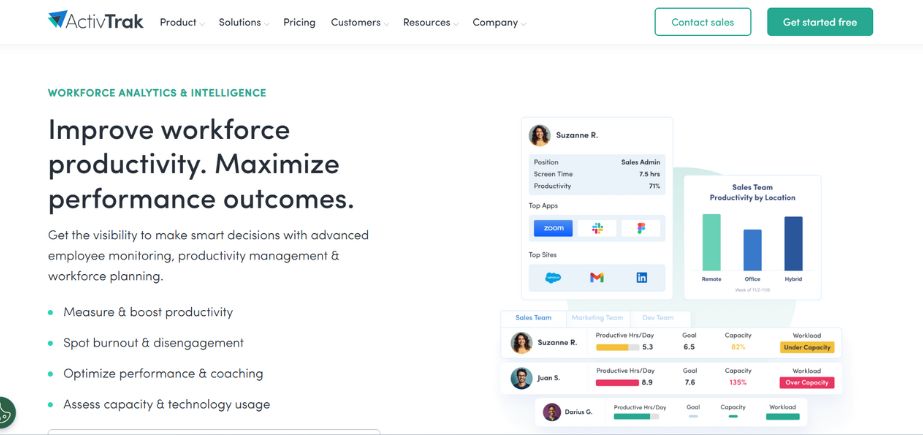
Type: Productivity-Focused SaaS Management Platform
Ratings: G2: 4.4/5, Capterra: 4.6/5
Website URL: https://www.activtrak.com/
ActivTrak also focuses on application adoption and usage analytics in the field of productivity optimization and promotes itself as a productivity-driven SaaS operations management platform. The platform offers clear findings on the success of an application and the user interactions to make strategic decisions regarding software investments.
The strength of the solution is that it could determine the productive use and give you the insight into usage to make the renewal decisions and approaches of optimization of licenses. Real-time alert of ActivTrak, custom alerts minimize the administrative overheads and ensure that application management is practical across levels of an organization.
Key Features:
- Productivity-focused analytics
- Application adoption tracking
- Usage-based renewal guidance
- Customizable alert system
- Real-time notifications
Pros:
- Productivity optimization focus
- Detailed usage analytics
- Customizable monitoring system
Cons:
- Limited comprehensive features
- Basic discovery capabilities
- Narrow specialization scope
Pricing: $10 user/month
Conclusion
The management software is still a flourishing market where organizations are increasing their use of cloud-based software to boost their digital transformation efforts. The platforms discussed in this in-depth review are the best of SaaS management tools, with each of them coming up with some special solutions aimed at solving the complexities of the current IT environment.
The choice of the SaaS operations management software in use needs to be made carefully with regard to organizational requirements, financial capabilities, and the strategic goals. Regardless of this need to focus on the ability to systematically search everything, conform to security policies and rules, to optimize expenditure, or to increase productivity, there is a product that would fit within this heterogeneous fabric.
Frequently Asked Questions
1. What is SaaS operations management software, and why do organizations need it?
SaaS software is a specialized service that assists an organization in identifying, managing, and optimizing its Software-as-a-Service applications.
2. How does SaaS operations management software help reduce costs?
Management software as a part of SaaS can usually save as much as 20-30 percent of SaaS budget by optimizing licensing, management of expiring contracts, and by doing away with duplicate subscriptions due to automated monitoring.
3. What are the key features to look for in SaaS operations management software?
The key functionality comprises an in-depth application discovery, license management, cost optimization, security and compliance tracking, user management access, and an automated tracking of the renewals.
4. How do these platforms ensure security and compliance?
SaaS operations software actively checks the applications used in the company against security breaches, assesses the compliance of the company against the industry standards, and offers a risk analysis of each app.
5. What is the typical implementation timeline for SaaS operations management software?
Timeline factors are the quantity of applications, integration demands, customization demands, and organizational change management procedures. A majority of the SaaS software developers provide professional services to fast-track implementation and adoption.
